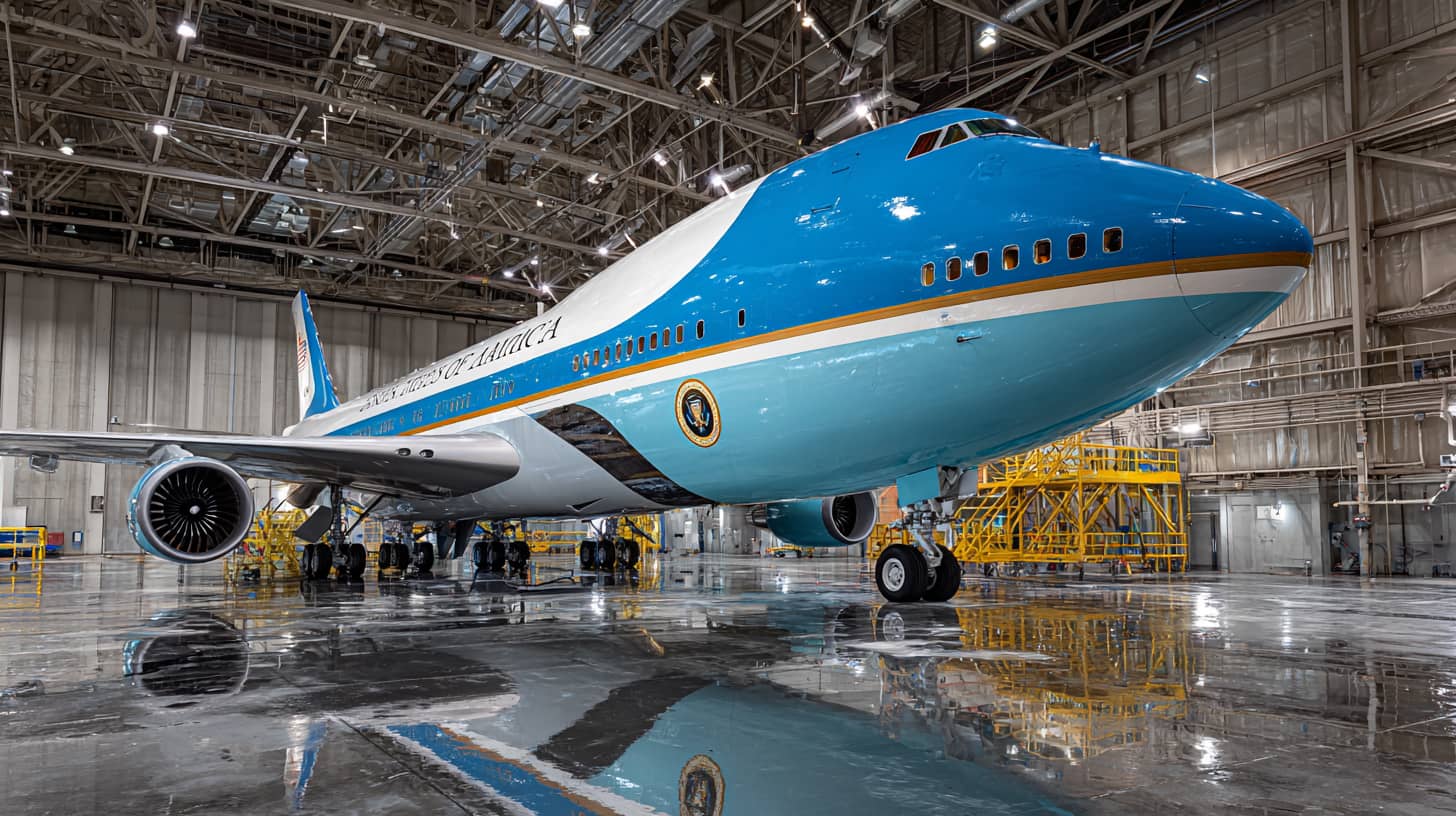When surface protection becomes a matter of national security
How much does it cost to paint the safest airplane in the world? The answer surprises even aviation industry experts. Air Force One is not just about aesthetics - each coating layer fulfills critical safety functions that go far beyond conventional aviation coating service standards.
The presidential aircraft places the most extreme demands on surface technology. Radar absorption, temperature fluctuations between minus 70 and plus 60 degrees Celsius and protection against electromagnetic pulses require coating systems that would be unthinkable in civil aviation.
More than just blue and white - functional surface technology
Why does it take several months to repaint a single aircraft? Because each of the more than 20 coating layers fulfills specific safety functions. While commercial aircraft coating service providers manage with three to five layers, the presidential aircraft uses highly complex multi-layer systems.
Specialized aerospace coating specialists develop tailor-made formulations that simultaneously protect against corrosion, shield electromagnetic signals and reduce heat development. These technologies are later incorporated into civil aircraft painting company applications.
Secret technology from space travel
Which coatings can withstand nuclear electromagnetic pulses? The answer lies in materials originally developed for military satellites. Conductive coatings create Faraday cage effects, while special pigments minimize radar signatures.
These aerospace coating service technologies are revolutionizing the entire aviation industry. Business jet coating and helicopter painting services benefit from innovations developed in the presidential fleet.
Quality control at presidential level
How do you test coatings for the world's most important aircraft? Through test procedures that exceed even FROSIO-certified coating standards. Every square centimetre is documented, analyzed and validated multiple times.
Specialized coating inspection service teams use X-ray analysis, electron microscopy and electromagnetic compatibility testing. Surface inspection service providers work with security clearances that are unknown in civil aviation.
Temperature tests at minus 70 degrees Celsius
What happens to aircraft surfaces in the stratosphere? Extreme cold shocks would destroy normal paintwork within minutes. Presidential Aircraft use cryogenic systems coating technologies that were originally developed for space missions.
These high-performance coatings remain elastic and crack-resistant even under the most extreme temperature fluctuations. Aircraft fuselage coatings for presidential aircraft set standards that drive the entire industry forward.
From military innovation to civilian application
Why is the government investing millions in coating research? Because innovations from the defense sector are revolutionizing civilian technologies. MRO Coating Service for airliners today uses materials developed at Air Force One.
Engine casing coating, landing gear coating service and cockpit surface protection benefit from military research programs. These technology transfers accelerate innovation throughout the aviation industry.
Safety through surface technology
Modern aircraft painting services go far beyond corrosion protection. Coatings today can dissipate lightning strikes, shield against electromagnetic interference and even offer self-repair functions.
These functionalities are the result of years of research in government programs. Hangar coating companies and aviation coating expert services use these findings for civil applications.
Investing in the future of aviation
The millions invested in presidential aircraft coating pay off in several ways. Developed technologies flow into commercial aviation applications and strengthen the technological leadership position.
Professional painting service providers with experience in government contracts are bringing these innovations to the civilian market. From private jets to commercial airliners, the industry is benefiting from Presidential Level technologies everywhere.
The most expensive aircraft paint job in the world is also an investment in the future of the entire aviation industry.
